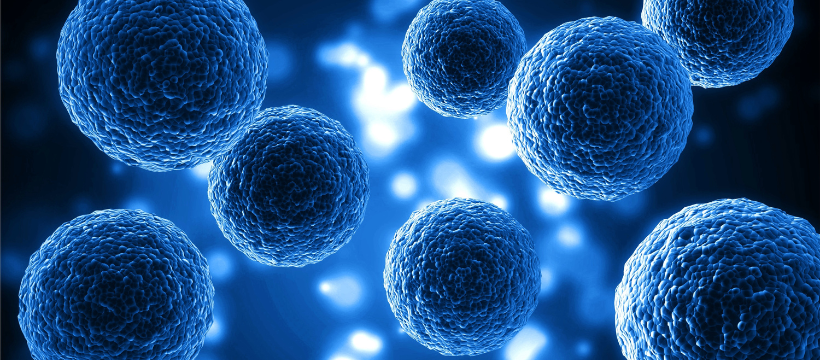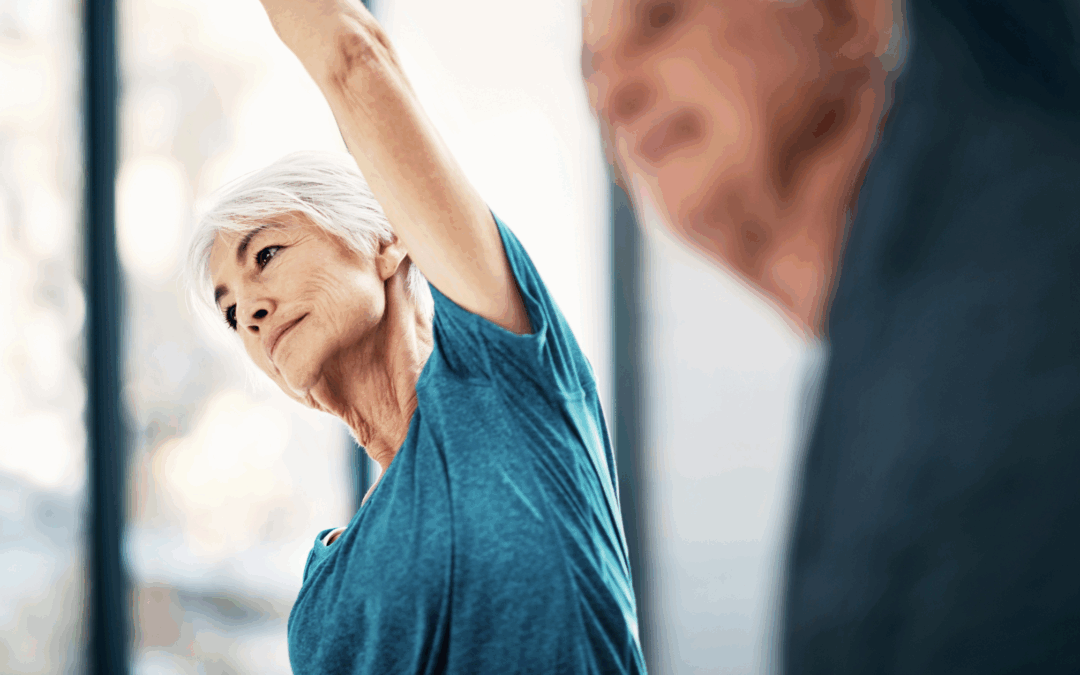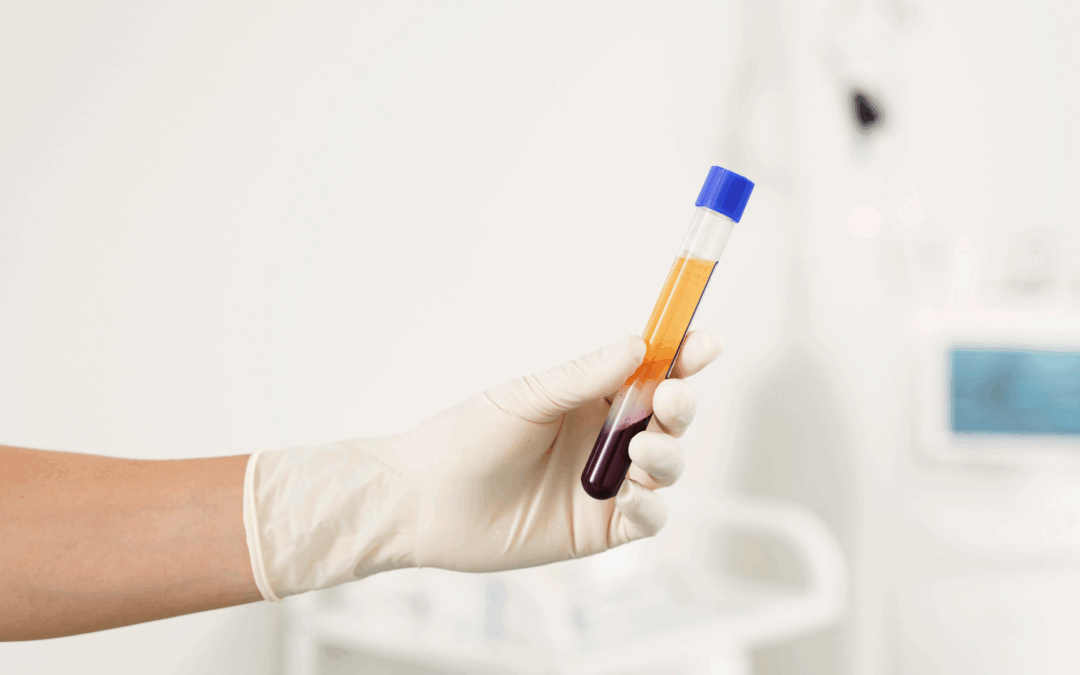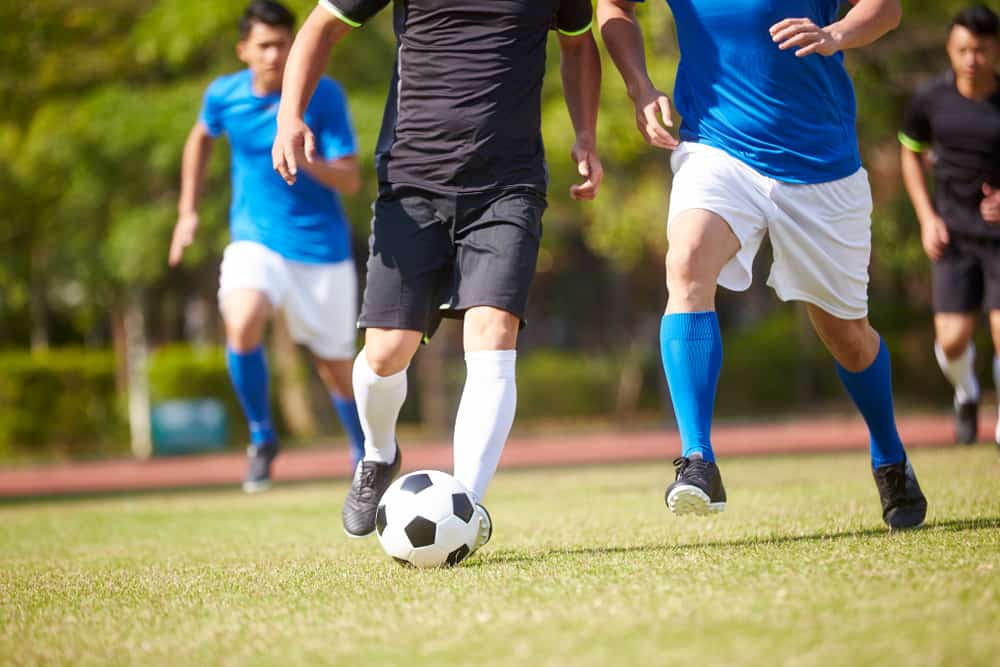
Nov 5, 2025
Our clinic partners with Personalized Stem Cells (PSC) – a leading U.S. stem cell banking and research company.
Their mission is to bring safe, FDA-compliant, autologous (your own) stem cell therapy options to patients right here in the United States.
If you’re interested in learning more about how stem cell banking and treatment may support joint health, recovery, and long-term wellness, we invite you to join an upcoming live webinar hosted by PSC:
📅 Date: Tuesday, November 18
🕕 Time: 6 PM EST / 3 PM PST
🎙️ Speaker: Dr. Jaime Garza, Professor of Orthopedic Surgery at Tulane University and Senior Medical Advisor to the NFL Alumni Association
During this educational session, Dr. Garza will discuss:
-
The latest advances in stem cell therapy for athletes and active individuals
-
How banking your own fat tissue can provide future access to personalized cell treatments
-
Safe and legal treatment options available in the U.S. today
👉
Reserve your spot here:
Register for the WebinarThis webinar is free and open to the public – you’re welcome to attend and ask questions directly to the PSC team.
If you’d like to learn more about how to get started with stem cell banking, our team can help you explore next steps following the webinar.
Warm regards,
SDOMG Clinic
In partnership with Personalized Stem Cells (PSC)
🌐 www.pscells.com

Aug 15, 2025
Living with chronic pain can feel like you’re constantly walking a fine line. On one side, staying active helps manage pain and maintain mobility; on the other, pushing too hard can lead to flare-ups and setbacks. The good news? You don’t need to run marathons, lift heavy weights, or endure high-impact workouts to reap the benefits of physical activity. Safe, low-impact exercises can help you stay active, improve strength, and enhance your overall quality of life—without overloading your joints or triggering unnecessary pain.
In this guide, we’ll explore why movement is essential for managing chronic pain, the types of exercises that are safest, and practical tips to make exercise a sustainable part of your routine.
Why Exercise Matters When You Have Chronic Pain
When your body hurts, it’s natural to want to move less. But inactivity often creates a vicious cycle: muscles weaken, joints stiffen, and your pain threshold can actually decrease over time. Regular, gentle movement offers multiple benefits:
- Improves circulation – helping to deliver oxygen and nutrients to muscles and tissues.
- Maintains joint flexibility – preventing stiffness that can worsen discomfort.
- Strengthens muscles – which helps support and protect painful areas.
- Boosts mood – releasing endorphins, your body’s natural pain relievers.
- Reduces inflammation – through consistent, moderate physical activity.
The key is to choose activities that work with your body, not against it.
Principles of Safe Exercise for Chronic Pain
Before jumping into specific exercise options, keep these guiding principles in mind:
- Start Slow, Progress Gradually – Overdoing it on day one can lead to flare-ups. Build up your time and intensity over weeks, not days.
- Listen to Your Body – Discomfort is normal when starting something new, but sharp or worsening pain is a red flag.
- Prioritize Consistency Over Intensity – A few minutes of movement daily is often more effective than occasional intense sessions.
- Incorporate Rest and Recovery – Your muscles and joints need time to adapt.
- Work With a Professional – A physical therapist or certified trainer with experience in chronic pain can help create a safe, tailored plan.
Low-Impact Exercises to Try
1. Walking
Walking is one of the simplest, most accessible exercises for chronic pain. It’s weight-bearing, which helps keep bones strong, yet gentle enough for most people. Start with short, 5–10 minute walks, and gradually increase your duration.
Pro tip: Invest in supportive shoes and consider walking on softer surfaces like grass or a track to reduce joint stress.
2. Swimming & Water Aerobics
Water provides buoyancy, which takes pressure off joints while still offering gentle resistance for muscle strengthening. Swimming laps, doing water aerobics, or even walking in the shallow end can improve cardiovascular health and mobility.
Bonus: Warm pools can help relax tight muscles and soothe soreness.
3. Cycling
Stationary or outdoor cycling is low-impact yet effective for building leg strength and improving endurance. A recumbent bike is often more comfortable for those with back or hip pain because it offers extra support.
4. Gentle Yoga
Yoga focuses on flexibility, balance, and controlled breathing—helpful for both physical and mental aspects of chronic pain. Look for gentle or restorative yoga classes, and avoid positions that cause sharp discomfort.
Tip: Inform your instructor about your condition so they can offer modifications.
5. Pilates
Pilates strengthens the core muscles, which play a big role in supporting the spine and reducing pain. Choose a beginner or therapeutic class and use props like resistance bands or small balls for extra support.
6. Tai Chi
This ancient martial art uses slow, flowing movements and deep breathing. It’s been shown to improve balance, coordination, and pain management, particularly in people with arthritis and fibromyalgia.
7. Resistance Band Training
Light resistance bands allow you to strengthen muscles without heavy weights. They’re gentle on joints and can be adapted to your fitness level. Exercises like seated rows, bicep curls, and leg presses can be performed slowly and mindfully.
8. Stretching Routines
Daily stretching keeps muscles limber and helps reduce stiffness. Focus on major muscle groups and move through each stretch gently, avoiding any bouncing or jerking motions.
Sample Weekly Low-Impact Activity Plan
| Day |
Activity |
Duration |
| Monday |
Gentle Yoga |
20 mins |
| Tuesday |
Walking |
15–30 mins |
| Wednesday |
Water Aerobics |
30 mins |
| Thursday |
Pilates |
20 mins |
| Friday |
Walking or Stationary Cycling |
20 mins |
| Saturday |
Tai Chi |
20 mins |
| Sunday |
Stretching |
10–15 mins |
Tips for Making Exercise Easier and More Enjoyable
- Use Heat Before Activity – Applying a heating pad or taking a warm shower before exercise can loosen stiff joints and muscles.
- Stay Hydrated – Proper hydration supports muscle function and helps prevent cramping.
- Break It Into Small Chunks – Two 10-minute sessions can be just as beneficial as one 20-minute workout.
- Track Your Progress – Keep a journal of your activities and how you feel afterward to identify patterns.
- Find a Buddy – Exercising with a friend provides motivation and accountability.
When to Stop and Seek Help
Mild soreness after starting a new activity is normal, but you should stop exercising and consult a healthcare professional if you experience:
- Sharp, stabbing, or severe pain
- Significant swelling
- Dizziness or shortness of breath
- Pain that persists or worsens over several days
The Bottom Line
Living with chronic pain doesn’t mean giving up on an active lifestyle—it just means adapting it. Low-impact exercises like walking, swimming, yoga, and tai chi can help you stay mobile, strengthen muscles, and improve your mental well-being without pushing your body into painful territory.
By starting slowly, choosing activities you enjoy, and listening to your body, you can make movement a powerful ally in managing chronic pain for the long term.

May 30, 2025
In the high-stakes world of sports, injury recovery time can define the trajectory of an athlete’s career. Whether it’s a torn ligament, chronic tendonitis, or a nagging joint issue, athletes are always seeking faster and more effective ways to heal and return to peak performance. This is where regenerative medicine, particularly Platelet-Rich Plasma (PRP) and Bone Marrow Aspirate Concentrate (BMAC), has emerged as a transformative solution.
These innovative therapies leverage the body’s own biological resources to accelerate tissue repair, reduce inflammation, and minimize downtime. In this post, we’ll delve into how PRP and BMAC are being used to help athletes recover faster from injuries and why they’re gaining popularity in sports medicine.
What is Regenerative Medicine?
Regenerative medicine refers to treatments that aim to restore normal function by repairing or regenerating damaged tissues or organs using the body’s own healing mechanisms. Unlike traditional treatments that manage symptoms or rely on surgical intervention, regenerative therapies work at the cellular level to enhance the natural healing process.
Among the most widely accepted and commonly used forms of regenerative medicine in athletic recovery are Platelet-Rich Plasma (PRP) and Bone Marrow Aspirate Concentrate (BMAC).
Platelet-Rich Plasma (PRP): Supercharging the Body’s Healing Process
PRP therapy involves concentrating platelets from a patient’s own blood and injecting them into the injured area. Platelets are rich in growth factors—biological signals that stimulate tissue repair and regeneration.
How PRP Works
- Blood Collection: A small amount of the athlete’s blood is drawn, typically from the arm.
- Centrifugation: The blood is spun in a centrifuge to separate platelets from other components.
- Injection: The resulting PRP—plasma with a high concentration of platelets—is injected directly into the injured tissue under ultrasound guidance.
PRP Applications in Sports Injuries
PRP is used extensively for musculoskeletal injuries common in sports, including:
- Tendonitis (e.g., tennis elbow, Achilles tendonitis)
- Ligament sprains (e.g., MCL sprains)
- Muscle tears
- Joint degeneration (e.g., mild osteoarthritis)
Benefits of PRP for Athletes
- Accelerated Healing: PRP delivers concentrated growth factors to the injury site, promoting faster tissue regeneration.
- Reduced Inflammation: The therapy helps modulate the inflammatory response, which can reduce pain and swelling.
- Minimally Invasive: As an injection-based treatment, PRP avoids the trauma of surgery and its associated risks.
- Shorter Downtime: Many athletes return to training and competition sooner than with traditional rehabilitation alone.
Bone Marrow Aspirate Concentrate (BMAC): A Rich Source of Healing Cells
Bone Marrow Aspirate Concentrate (BMAC) is another autologous (self-derived) regenerative therapy. It involves aspirating bone marrow—typically from the iliac crest (hip bone)—and concentrating the healing components for injection into injured tissues.
What’s in BMAC?
BMAC is rich in:
- Platelets: Similar to PRP, these deliver growth factors that aid in healing.
- White blood cells: Important for modulating inflammation and fighting infection.
- Progenitor cells: These assist in the repair and regeneration of damaged tissue, especially in bone and cartilage injuries.
How BMAC Works
- Harvesting: Bone marrow is collected using a minimally invasive aspiration procedure.
- Processing: The marrow is processed to concentrate the regenerative components.
- Injection: The final concentrate is injected into the site of injury.
BMAC Applications in Athletic Recovery
BMAC is especially useful in treating:
- Cartilage injuries
- Joint degeneration
- Non-healing bone fractures
- Chronic tendon and ligament injuries
Benefits of BMAC for Athletes
- Deep Tissue Repair: BMAC is effective for more complex or severe injuries, especially those involving cartilage and bone.
- One-Time Treatment: In many cases, a single BMAC injection can provide significant improvement.
- Natural and Autologous: As with PRP, BMAC uses the athlete’s own biological material, minimizing risk of rejection or complications.
- Enhanced Recovery: Athletes often experience reduced pain, improved function, and quicker return to play.
Clinical Evidence
BMAC has been studied for its potential in treating cartilage defects and bone injuries. A 2016 clinical trial published in Orthopaedic Journal of Sports Medicine showed that athletes with knee cartilage lesions treated with BMAC experienced meaningful improvements in function and pain relief.
PRP vs. BMAC: Which is Better for Athletic Injuries?
While both PRP and BMAC are powerful tools in regenerative medicine, they serve different roles depending on the nature and severity of the injury.
| Aspect |
PRP |
BMAC |
| Source |
Blood |
Bone marrow |
| Best For |
Soft tissue injuries, mild arthritis |
Bone/cartilage injuries, chronic damage |
| Processing Complexity |
Low |
Moderate to high |
| Healing Potential |
Moderate |
Higher (especially for deeper injuries) |
| Invasiveness |
Minimally invasive (blood draw) |
Slightly more invasive (bone aspiration) |
In many sports medicine clinics, practitioners assess the injury type, severity, and the athlete’s goals to determine which therapy—or combination—is most suitable.
The Athlete’s Perspective: Real-World Impact
Athletes from every discipline, from weekend warriors to Olympic gold medalists, are increasingly turning to PRP and BMAC to speed up recovery. High-profile sports figures like Tiger Woods, Rafael Nadal, and Kobe Bryant have reportedly used PRP therapy to overcome injuries and return to elite competition.
For athletes, the primary appeal of these treatments lies in the combination of effectiveness and reduced recovery time. In a world where every game, match, or race matters, shaving weeks off a recovery timeline can make a critical difference.
Limitations and Considerations
While PRP and BMAC are promising, they’re not miracle cures. Effectiveness can vary based on:
- Type and chronicity of injury
- Overall health and age of the athlete
- Technique and quality of the preparation
Additionally, these treatments may not be covered by insurance and can be costly, though many athletes see them as worthwhile investments in their careers and long-term joint health.
Conclusion
Regenerative medicine is reshaping the future of sports injury recovery. PRP and BMAC stand at the forefront, offering biologically-based, minimally invasive options to accelerate healing and reduce downtime for athletes of all levels. As research continues and technology advances, the integration of these therapies into mainstream sports medicine is expected to grow—giving injured athletes a faster, safer path back to the game.
Whether you’re a professional athlete or an active individual looking to get back on your feet, PRP and BMAC offer compelling alternatives to surgery and long-term medications. Always consult with a qualified sports medicine specialist to determine the best course of action tailored to your specific condition and goals.

Jan 2, 2024
Join Dr. Rogers and Dr. Evangelista for a FREE Webinar on the Non-Surgical Management of Achilles Tendon Injuries where they will discuss common causes and innovative treatment solutions to restore patients back to better health.
When: January 9, 2024
Time: 12:00pm PDT
Register HERE for the Webinar

Apr 1, 2022
Two Types of Sports Injuries
Sports injuries are injuries that happen when playing sports. Anyone is liable to find themselves injured from sports; there is no age limit for sports-related injuries. People may not know that there are two types of sports injuries: acute and chronic. Acute injuries occur suddenly and are instantly recognizable, such as a sprained ankle. Chronic injuries are injuries that occur from playing sports for an extended period of time or overuse, such as tendinosis or other inflammatory conditions.
Signs of a Sports Injury
Some of the most common symptoms of a sports-related injury include…
- Sudden and/or severe pain
- Swelling
- Joint or bone that is visibly out of place
- Inability to put weight on knee, ankle, foot, or leg
- Extreme tenderness at injury site
- Inability to move joint normally
- Pain while playing
- Dull, ongoing ache even while resting
The most common sports injuries are sprains and strains. Sprains are injuries to ligaments, the bands that connect the bones in a joint. Suddenly overstretching ligaments can deform or tear them, resulting in a sprain. Strains are injuries to the actual muscle fibers or tendons that anchor the muscle to the bone. Strains are also called pulled muscles and the name is fitting. Similarly to sprains, strains are also caused by overstretching or overusing a muscle which results in tearing the muscle fibers.
Treatment and Prevention of a Sports Injury
Most sport-related injuries are treated with the RICE method…
- Rest – decrease regular activity and rest the injury
- Ice – apply an ice pack to the injury for 20 minutes up to eight times per day
- Compression – apply even pressure on the injured area to reduce swelling
- Elevation – put a pillow under the injury site to raise it at a level above the heart if possible
Doctors may also recommend over-the-counter anti-inflammatories, such as Ibuprofen or Tylenol, to help relieve pain and decrease swelling. An immobilizer such as a sling, splint, or cast may also be given to the patient to promote faster healing and prevent more damage from being done to the injured area. For more serious injuries, such as ACL tears, rehabilitation therapy and/or surgery may be required.
Not all sports injuries are preventable, but surprisingly, many of them are. Individuals can be at higher risk of injuries by participating in activities they are not conditioned for. Skipping out on warm-ups can also result in injuries. Even a gentle warm-up will increase blood flow to the muscles, give your body more flexibility, and can help decrease injuries.
Avoiding overuse is another easy way to avoid injury. For example, if you haven’t played baseball in several years, avoid going to a batting cage for two hours. Recognize when you are fatigued and stop at that point. Don’t feel the need to push your body past its limit. Light training or daily exercise leading up to your sports activities can help prevent sprains, strains, and dislocations.
Sports injuries are common and treatable. If you find yourself injured from a sports-related accident, follow the RICE method and your doctor’s orders to achieve a quick recovery.
SDOMG specializes in sport rehabilitation and helping patients get back to the activities they love most. Fill out the form below to get started today:

Oct 9, 2020
The old adage among athletes is “No pain, no gain.” Sure, sore muscles after a hard workout are to be expected, but according to the National Safety Council, sports-related exercise accounted for nearly 800,000 injuries among adults in 2017.
These included injuries sustained from:
- Cycling
- Exercise with equipment
- Racket sports
- Recreational basketball
- Softball
- Soccer
- Swimming
Post-exercise soreness can occur up to 1-2 days after an exercise. However, if severe pain occurs during the exercise or immediately after, and if it progressively worsens and limits daily activities, you should seek consultation for a possible injury.
Breakthrough Options for Treating Sports Injuries
Regenerative medicine specialists can offer a number of options to treat sports-related injuries such as:
- Bursitis
- Tennis elbow
- Golfer’s elbow
- Tendinitis, Tendon tears, such as rotator cuff tears
- Hip and shoulder labral tears
- Ligament tears
- Meniscus tears
- Osteoarthritis
- Plantar fasciiosis
- Repetitive stress injuries
How Regenerative Medicine Treats Sports Injuries
Regenerative medicine uses state-of-the-art technology to maximize your body’s innate healing capacity. It uses your own cells to treat injuries in the joint cartilage, tendons or ligaments.
- Cell based treatments use cells derived from your own bone marrow or adipose (fat) tissue. These tissues contain adult stem cells and many other healing cells. When they are reinjected into an injured area they initiate healing. These cells produce molecules that direct cells to form new blood vessels, reduce inflammation, stimulate stem cells and encourage the formation of healthy tissue.
- Platelet Rich Plasma puts the healing properties of your own blood to work to heal damaged joints, tendons and muscles. Platelet cells from the blood release growth factors and proteins that promote tissue repair. The plasma carries hormones, electrolytes, proteins and nutrients that nourish cells during the healing process. PRP is not a “one-size-fits-all” treatment. To be effective, these treatments are customized to your specific medical condition. When performed correctly, PRP can bring pain relief and healing of injuries such as tennis elbow, tendon tears and osteoarthritis within weeks.
- Prolotherapy also known as Proliferative Therapy uses dextrose solutions and other natural substances to stimulate a healing response in chronically injured ligament, tendon or joints. The treatment can strengthen ligaments, improve stability and relieve pain. Scientific studies have demonstrated prolotherapy can be effective in treating tendinopathy, ligament sprains, tennis elbow, joint laxity, plantar fasciitis and osteoarthritis.
The “X” Factors
Great athletes are often said to possess the “X” factor, that special variable that influences successful outcomes. The same can be said of regenerative medicine treatments. The most successful regenerative treatments have the following “X” factors:
- Autologous source: Regenerative products that come from your own body (autologous) have been proven to be safe and effective in peer-reviewed research. The U.S. Food and Drug Administration (FDA) currently does not allow the use of donor stem cell products derived from amniotic fluid or other fetal tissues to treat orthopedic conditions. These products pose a risk of disease transmission or immune reaction. Moreover, these donor tissues do not to contain living stem cells, as opposed to what is claimed by the companies that market these products.
- Customized treatment: The best outcomes occur when your own cells and platelet rich plasma are prepared using the most advanced protocols to create a treatment that is customized to your specific injury.
- Targeted delivery: To maximize effectiveness, these regenerative treatments should be delivered under image guidance with fluoroscopy (x-ray) or ultrasound to ensure precise delivery to the injured area. Only physicians with fellowship training in advanced image guided procedures are certified to perform these procedures.
- Expert physicians: If you are considering regenerative medicine for the treatment of your spine or joint condition, seek a board certified physician who specializes in treating orthopedic injuries and has advanced training in regenerative medicine. These physicians are best suited to obtain the best results employing the latest research, technology and safety protocols.
Drs. Christopher J. Rogers and Mary A. Ambach of San Diego Orthobiologics Medical Group together have successfully treated thousands of patients with PRP and cell-based therapies for more than three decades. They are published authors and stem cell researchers. Their facility in Carlsbad contains the most advanced Regenerative Medicine technology in San Diego and offers same day treatments with the highest level of safety and efficacy.
https://www.iii.org/fact-statistic/facts-statistics-sports-injuries#:~:text=Basketball%20followed%20with%20about%20500%2C000,players%20have%20generated%20national%20headlines.





